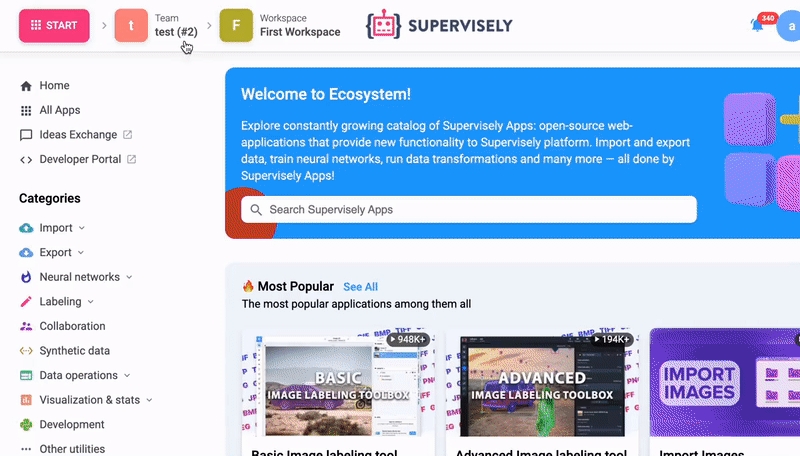Overview
Last updated
Was this helpful?
Last updated
Was this helpful?
There are many different applications in the Supervisely ecosystem for exporting data to various popular formats. However, companies often need to implement custom data export in their specific format to meet their particular requirements.
In the upcoming tutorial series, you will learn 2 ways to create a custom export app for exporting data from the Supervisely platform.
sly.app.Export (simple)👍 This way is more convenient and can handle most of the routine tasks and cover most required use cases. All you need to do is create your own class (inherit from sly.app.Export), and override the process method. Method process should return the path to the result data (folder or archive).
.
.
It is more recommended way to use SDK export template class (sly.app.Export) to create custom export app. However, if your use case is not covered by our export template, you can create your own app without the template. We will also learn this way in the upcoming tutorial series.
.
.
sly.app.Export class will handle export routines for you:
it will check that selected project or dataset exist and that you have access to work with it,
it will upload your result data to Team Files and clean temporary folder, containing result archive in remote container or local hard drive if you are debugging your app.
Your application must return string, containing path to result archive or folder. If you return path to folder - this folder will be automatically archived.
sly.app.Export has a Context subclass which contains all required information that you need for exporting your data from Supervisely platform:
Team ID - shows team id where exporting project or dataset is located
Workspace ID - shows workspace id where exporting project or dataset is located
Project ID - id of exporting project
Dataset ID - id of exporting dataset (detected only if the export is performed from dataset context menu)
context variable is passed as an argument to process method of class MyExport and context object will be created automatically when you execute export script.
Output:
The following pages of the guide about creating a custom export app will refer to this section, which describes the preparation of the working environment.
For both options, you need to prepare a development environment. Follow the steps below:
Step 3. Open repository directory in Visual Studio Code.
Step 4. Select created virtual environment as python interpreter.
Please note that the path you specify in the SLY_APP_DATA_DIR variable will be used for saving application results and temporary files (temporary files will be removed at the end).
For example:
path on your local computer could be /Users/maxim/my_data/
path in the current project folder on your local computer could be results/
Don't forget to add this path to
.gitignoreto exclude it from the list of files tracked by Git.
When running the app from Supervisely platform: Project and Dataset IDs will be automatically detected depending on how you run your application.
We advise reading our guide if you are unfamiliar with the of a Supervisely app repository because it addresses the majority of the potential questions.
Step 1. Prepare ~/supervisely.env file with credentials.
Step 2. Fork and clone repository with source code and create .
Step 5. Open local.env and insert your values here. Learn more about environment variables in our
